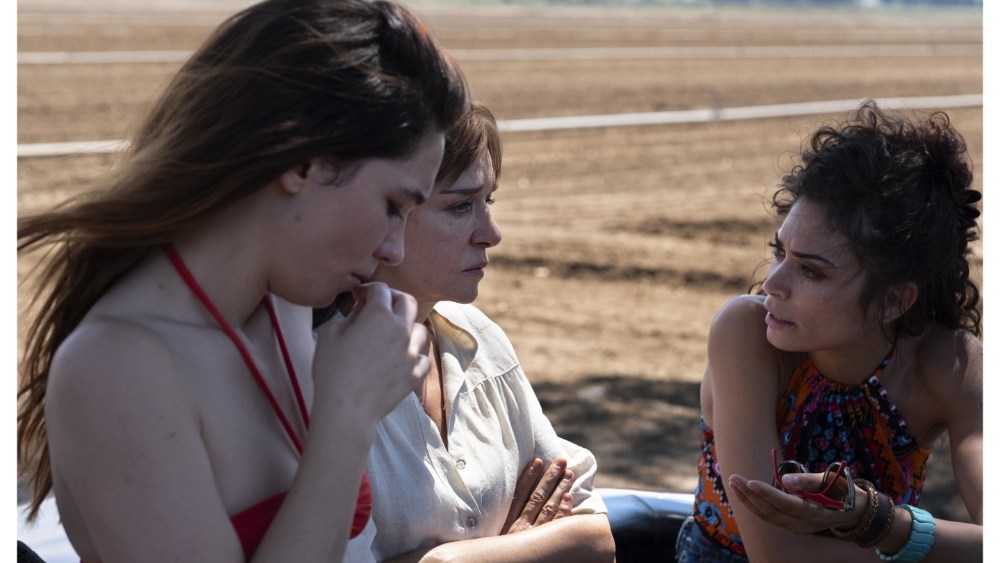Mario Martone Talks Cannes-Bound ‘Fuori’ Starring Valeria Golino
Italian auteur Mario Martone, who last competed for the Cannes Palm d’Or in 2022 with “Nostalgia,” will soon be back on the Croisette with “Fuori” a drama set in 1980 Rome that depicts a specific period in the life of feminist writer Goliarda Sapienza who is best known for posthumously published erotic novel “The Art of Joy.”
Variety has been given an exclusive clip of the drama which is produced by Indigo Film with RAI Cinema and Fremantle’s The Apartment, and co-produced with Srab Films, and La Pact Production in collaboration with Fremantle. Goodfellas is handling international sales. The film will go on release in Italy on May 22.
“Fuori,” which translates as “Outside,” portrays Sapienza, played by Valeria Golino, during the 1980s when, after “The Art of Joy” is rejected by the Italian publishing world, she ends up in a Rome prison for stealing jewelry and forges a deep bond with a repeat offender and political activist named Roberta, played by Matilda De Angelis (“Citadel: Diana”). The bond deepens once they are both out of jail.
Golino, incidentally, was in Cannes last year as director of a TV series adaptation “The Art of Joy” set in early 20th-century Sicily.
Martone spoke to Variety about his vision for “Fuori” which, he says, portays the bond between two women who first intersected in jail but is also “a road movie” set within the city of Rome in 1980.
Suddenly, after being ignored for decades, Goliarda Sapienza has become a hot piece of IP in Italy. What angle did you choose?
Ippolita di Majo [the film’s screenwriter who is also Martone’s partner] had this beautiful intuition: to just look at one summer and the bond between these two friends, leaving out any trace of being a biopic. The fact that she is the writer of “The Art of Joy” is an element. But the film is not biographical. That immediately turned me on. The idea of being able to portray these two wonderful characters. The writer and this young woman who is both a petty criminal and a political activist. I liked this a lot. I saw two beautiful female characters. And there was this possibility of making this a journey across Rome in 1980. A road movie. This fascinated me a lot.
Talk to me about working with Valeria Golino who has been instrumental to bringing this writer’s work and her story to the fore. And about working with Matilda and the other actors.
As you can imagine, Valeria was imbued with the spirit of Goliarda Sapienza. It was wonderful to work with her, we’d been wanting to make a film together since we were kids. And there was real love and connection between her and the other actors. I think this is very important, you can feel that a lot in the film. And I have to say, they really let themselves go. The film has a sort of rambling quality, in the sense that there are long sequences. There is this idea of sort of happily drifting. And so it’s clear that, also from the point of view of the film’s direction, they really needed to follow me. In short, the relationship was very alive. I mean, we were together with this great spirit of abandon, let’s say. And I really had the feeling that the actors were always willing to play along with all the things I proposed, even when they were quite particular.
The visuals of “Fuori” are very elegant and really evoke Rome of the early 1980s. Talk to me about working with your cinematographer, the great Paolo Carnera.
We started from the idea of wanting the movie to be perceived as being shot on film, even though it’s shot digitally. So chromatically we referenced the cinema of those years. In this movie I use zooms, I use a series of characteristics of the cinema of the ’70s that are no longer used. Even the format, the film has a 1:66 aspect ratio [AKA European Widescreen] which is almost never used anymore. Also, rather than creating fake images with VFX, instead the idea was to have a real images. To shoot in real places, including the prison. Goliarda’s apartment is her real apartment of that time. Rome’s Rebibbia penitentiary is the real prison and the inmates are real inmates.
You use several tracks by British multi-instrumentalist Robert Wyatt, founder of Soft Machine. Talk to me about this interesting choice
I never think about the music before shooting, never. I usually almost always use repertoire. And I work on it when I edit. So I started editing and I was looking for a female voice to create a sonorous off-voice, evocative of a Goliarda. But we never come across the right voice. And then, I don’t even know how, from what corner of my mind Robert Wyatt came to me. The fragility of his voice, the vitality and at the same time that sense of anxiety, that is in his songs. So I thought: who cares if it’s a male voice, it’s the voice of a soul. And it was a soul that suddenly I felt was able to have an intense dialogue with the soul of Goliarda Sapienza.


